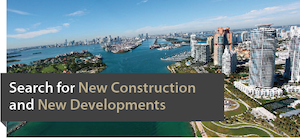$2,600,000,000. That’s the net worth it takes to be among the top 25 wealthiest Floridians. Most of us can’t imagine that level of wealth. When we printed a similar list just four years ago, it took “only” $1.2 billion to crack the top 25 — less than half of this year’s figure. Even Secretary of Commerce Wilbur Ross, with a net worth of $2.5 billion, missed the cut. Why is that?
For one, more of the truly wealthy are gravitating to Florida. As editor Mike Vogel points out, Florida has no state income tax, no city/county income tax, no state inheritance tax and good asset protection laws. Plus, Florida offers excellent airports, top-flight activities and, of course, warm winter weather.
Accumulating huge wealth usually means building a national or international company. Shad Khan, an immigrant from Pakistan, used his engineering know-how to start an auto parts business. He’s now worth $7.4 billion. Reinhold Schmieding, whose parents were immigrants, built one of the world’s leading orthopedic surgical instrument companies. The Naples entrepreneur has a net worth of $4.1 billion. Then there’s Thomas Peterffy, a Hungarian immigrant who’s a pioneer in electronic stock trading. He’s Florida’s wealthiest at $15.2 billion.
The list highlights the huge divide between the wealthy and ordinary wage earners. While the wealthy employ lots of helpers — cooks, drivers, gardeners, executive assistants, even yacht crews — they don’t face the same financial trade-offs that most of us do every day. Even if we have fantastic jobs and careers, we can’t have everything. We are forced to make choices.
The growing gap between the working class, professionals and the wealthy is worrisome. We have become a nation divided, a fact that became evident in the recent election.
Serving the wealthy is big business. Florida is home to dozens of trust companies and private banks that help the wealthy maximize returns, hand money down to future generations in tax-efficient ways, honestly minimize tax burdens, invest for short- and long-term goals and plan for retirement.
Our Economic Backbone piece on wealth management features tax and investment tips and a list of trust and investment banks to help you navigate the options.
Florida continues to grow. Today, the Sunshine State is home to 20,731,650 people, up nearly 400,000 from last year. That’s a gain of more than 1,000 people each day.
The growth isn’t occurring evenly. The smallest five counties have 58,363 residents, up only 39 people from last year. Yet the largest five counties now include 8,860,453 residents, a gain of 2.1%, or almost 200,000 people over the same 12 months.
This trend toward urbanization is happening worldwide. For better or worse, most people now prefer to live closer to others, where there are more lifestyle choices and, of course, more jobs.
In this edition, Florida Trend publishes its annual Economic Yearbook for the 49th successive year. We peer into the number of jobs and the home values in each region, then explore the population, wage levels and income growth of each county. For Florida business executives and economic development leaders, this is the most referenced issue of the year, often the backbone of speeches and presentations. We’re proud to present it again and are sure you will continue to find it useful.
— Andy Corty
Publisher
Click Here to read more.







